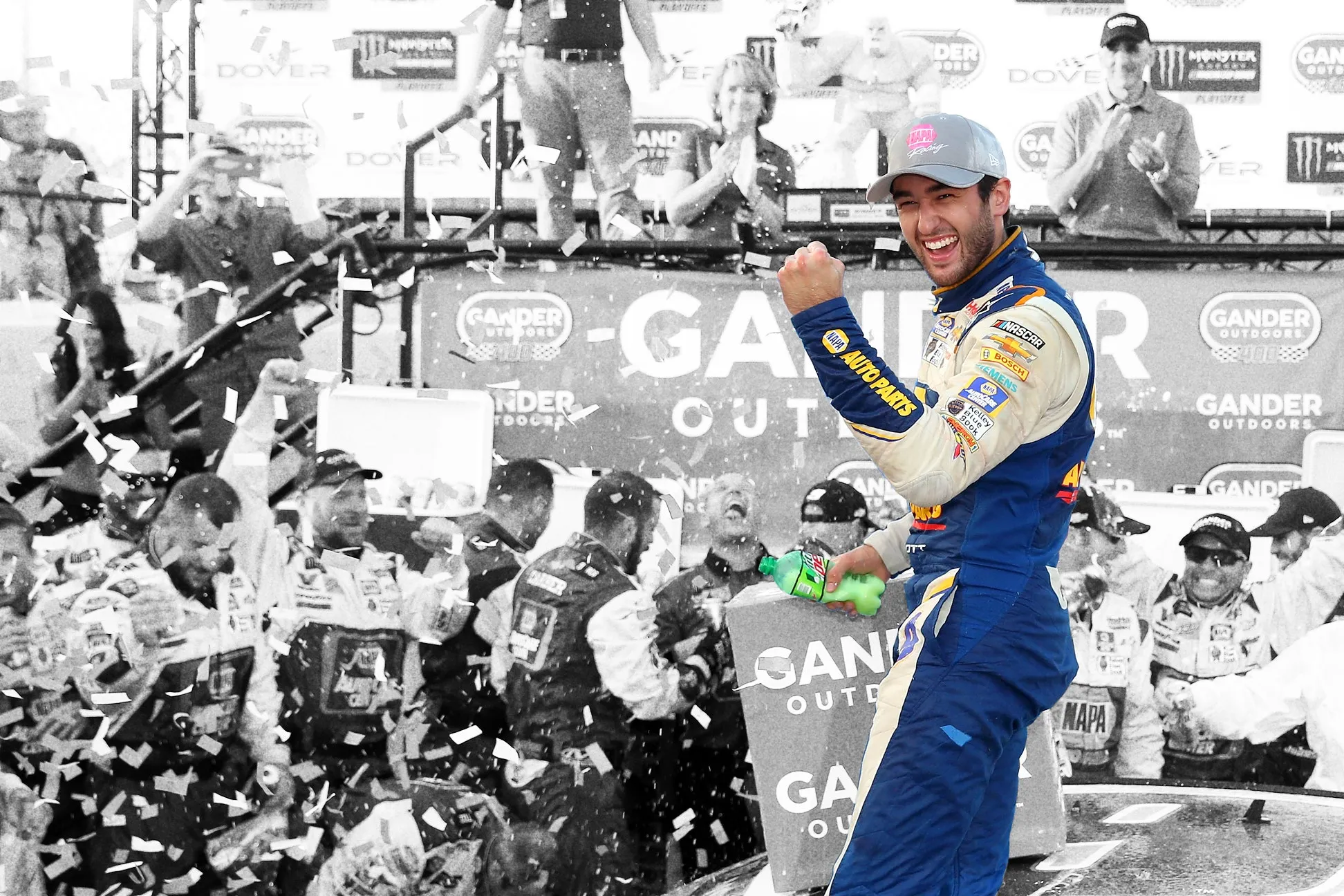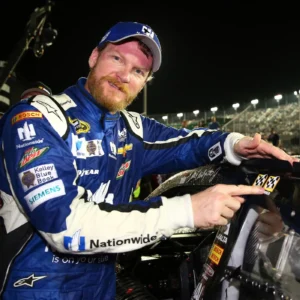Chase Elliotts Luxury Lifestyle Is A Symbol Of The Excesses Of The Racing Industry And It Needs To Be Reined In To Create A More Sustainable And Equitable Sport

Few names in NASCAR shine as brightly as Chase Elliott. As the 2020 NASCAR Cup Series Champion, Elliott has cemented himself as one of the sport’s biggest superstars. With an army of loyal fans and lucrative sponsorship deals, he has built an enviable career—one that comes with extraordinary wealth and a lavish lifestyle.
From private jets to luxury cars and multimillion-dollar estates, Chase Elliott’s lifestyle has become a symbol of NASCAR’s extreme financial divide. But in a sport that prides itself on its working-class roots, is this level of extravagance a dangerous precedent?
As NASCAR struggles with rising costs, declining viewership, and growing concerns about sustainability, many are beginning to question whether the industry’s biggest stars, like Elliott, should be leading the way in financial excess—or setting an example of responsibility and balance.
Chase Elliott’s Wealth: How Much Is Too Much?
A Multimillionaire in a Sport of Blue-Collar Roots
Stock car racing was built on the backs of hardworking, blue-collar drivers and mechanics who poured everything they had into the sport. Yet today, it has evolved into a billion-dollar industry, with top drivers like Chase Elliott enjoying a level of luxury far removed from NASCAR’s gritty origins.
Reports estimate that Elliott’s net worth is well over $15 million, with millions more pouring in annually from sponsorships with brands like NAPA Auto Parts, Hooters, and Chevrolet. His success on the track has translated into a lifestyle that includes:
- Mansions worth millions in Georgia and beyond
- A collection of high-end sports cars and custom-built racing machines
- Private jet access, eliminating the need to deal with commercial travel
- Expensive hobbies, including yacht trips, designer fashion, and luxury vacations
This level of wealth isn’t unique to Elliott—many top NASCAR drivers live similarly extravagant lives—but is it becoming excessive in a sport that claims to represent everyday Americans?

The Racing Industry’s Growing Divide: A Sport of Haves and Have-Nots
Why Only a Few NASCAR Drivers Get Rich While Others Struggle
While Chase Elliott enjoys the spoils of success, the financial reality for lower-tier drivers and struggling teams is vastly different. The cost of competing in NASCAR has skyrocketed, making it increasingly difficult for smaller teams and young drivers to break into the sport.
To illustrate this divide:
- A top-tier NASCAR team spends an estimated $20 million or more per season
- A mid-tier team struggles to keep up with budgets closer to $5 million
- Lower-tier and independent teams barely scrape by, relying on patchwork sponsorships and aging equipment
In short, the rich get richer, while the rest of the field fights just to stay afloat.
Sponsorships Favor the Biggest Stars
Big-name drivers like Elliott, Kyle Larson, and Joey Logano attract massive sponsorship deals, giving them access to the best equipment, crew, and resources. Meanwhile, lesser-known drivers often struggle to secure even basic funding, making it nearly impossible for them to compete on equal footing.
This financial imbalance raises a crucial question: Is NASCAR still a fair sport, or has it become a game where only the wealthiest can truly succeed?
The Impact of Excessive Wealth on NASCAR’s Future
How Luxury Lifestyles Could Harm the Sport’s Reputation
While success should be rewarded, there is a growing concern that drivers flaunting their wealth—like Chase Elliott’s extravagant lifestyle—could alienate the very fans who keep the sport alive.
The core of NASCAR’s fanbase has historically been middle-class, hardworking Americans who admire the sport’s raw, competitive nature. Seeing drivers live in mega-mansions, drive Lamborghinis, and travel by private jet creates an uncomfortable divide between fans and the stars they once related to.
If NASCAR drivers become more like Hollywood celebrities than racers, will fans still feel a connection to them?

Rising Costs Could Make NASCAR Unsustainable
The sport’s increasing financial demands are already creating issues, and if left unchecked, NASCAR could price itself out of sustainability.
Consider the following:
- New car technology costs teams millions, leaving smaller teams unable to compete
- Sponsorship deals are harder to secure, especially for underfunded teams
- Fan engagement is declining, with many struggling to afford race tickets and merchandise
If the sport continues to favor only the wealthiest teams and drivers, could it eventually collapse under its own weight?
Time for Change: How NASCAR Can Rein in Excess and Create a More Equitable Sport
Drivers Should Set a Better Example
While no one is saying that Chase Elliott shouldn’t enjoy his success, there is a growing expectation that top drivers should set a more responsible example. NASCAR legends like Dale Earnhardt Sr. and Richard Petty remained deeply connected to their working-class roots, never letting their wealth overshadow their love for racing.
Today’s drivers should consider:
- Being more transparent about their earnings and how they give back to the sport
- Using their wealth to support struggling teams and young drivers
- Leading initiatives to reduce costs in NASCAR and make it more accessible
A More Balanced Sponsorship Model
If NASCAR truly wants to level the playing field, sponsorship deals should be distributed more fairly. Instead of pouring millions into already successful drivers, major brands could:
- Support up-and-coming racers to create more competition
- Invest in smaller teams to keep the sport diverse and competitive
- Limit excessive spending on luxury perks that don’t improve racing performance
Making NASCAR More Affordable for Everyone
For NASCAR to thrive, it must ensure that teams, drivers, and fans can afford to participate. Possible solutions include:
- Cost-cutting measures for teams to reduce financial strain
- Affordable ticket pricing to keep fans engaged
- Stronger revenue-sharing models to support all levels of the sport
By taking these steps, NASCAR can preserve its blue-collar spirit and ensure a future where talent—not just money—determines success.
Final Thoughts: Chase Elliott’s Wealth Should Be a Wake-Up Call
Chase Elliott’s luxurious lifestyle is not inherently wrong, but it does highlight the growing inequality within NASCAR. As top drivers enjoy multi-million-dollar homes and endless sponsorship perks, smaller teams and struggling drivers are left to fight for survival.
If NASCAR wants to remain an exciting, competitive, and relatable sport, it needs to address these disparities and create a more sustainable system. Otherwise, the sport risks losing its soul—and its fans.
The solution isn’t to punish success but to ensure that success remains achievable for all—not just those at the top.






